Re-nest Success
By Tara McIntire
I had noticed a persistent Anna’s Hummingbird zipping about our yard, collecting web from all the nooks and crannies, which made me wonder if she were building a nest nearby. Sure enough, a few weeks later our neighbor mentioned there was a very agitated bird in their yard with a nest in their lemon tree. Luckily for me, they lived next door and offered access through the side gate whenever I wished!
I grabbed my camera and headed over to check out the situation. I was delighted to find a female Anna’s Hummingbird tucked inside a perfect nest she had built on a lemon leaf. (Note: The males are absent during parenting, taking no part in nest building or rearing of young.)

Still working from home at that point, I was eager to fill rare moments between meetings with something other than more work. I readied my camera and identified the best angles and time of day for lighting, while making sure to not disturb the female who was potentially incubating eggs.

Anna’s Hummingbird egg incubation takes typically around 16 days, so on March 14th I wandered over to see if there were any changes. With mom safely away, something caught my eye through my long lens. One tiny hummingbird was barely peeking out of the nest!
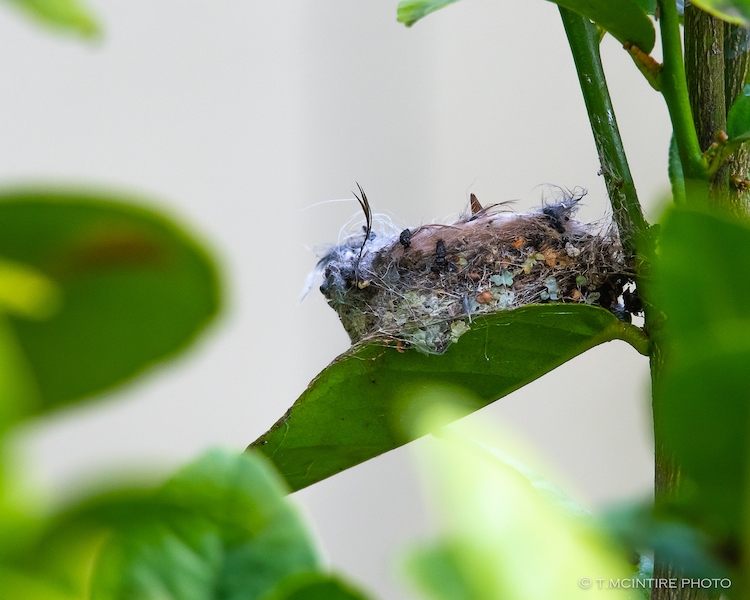
This species of hummingbird fledges roughly 20 days after hatching and since I wasn’t looking directly into the nest, I couldn’t tell how far along the nestling was. However, just six days later I spotted not one but TWO birds, and they were nearly bursting out of the stretchy, tiny nest made of lichens and spider web. I imagined the nest felt a bit like my yoga pants after a long Covid winter eating ice cream and comfort food.

Two days later, our neighbor called and said, “A baby bird fell out of nest!’
“I’ll be right over!” I responded, sprinting to the yard. The nestling was sitting on the concrete patio, from which I quickly scooped it up. My adrenaline valve was wide-open at this point and I went into full emergency-response mode. As I filled a bowl with tissues to make a warm temporary nest, I was also carefully inspecting the bird and visually assessing its general condition. It was bright-eyed and very active – determined to climb out of the bowl!
Simultaneously I called my friend, an experienced wildlife rehabilitation volunteer, to discuss the situation and make a plan. (Note: If you do find a hummingbird on the ground, please call your local wildlife rehabilitation center immediately for guidance.)
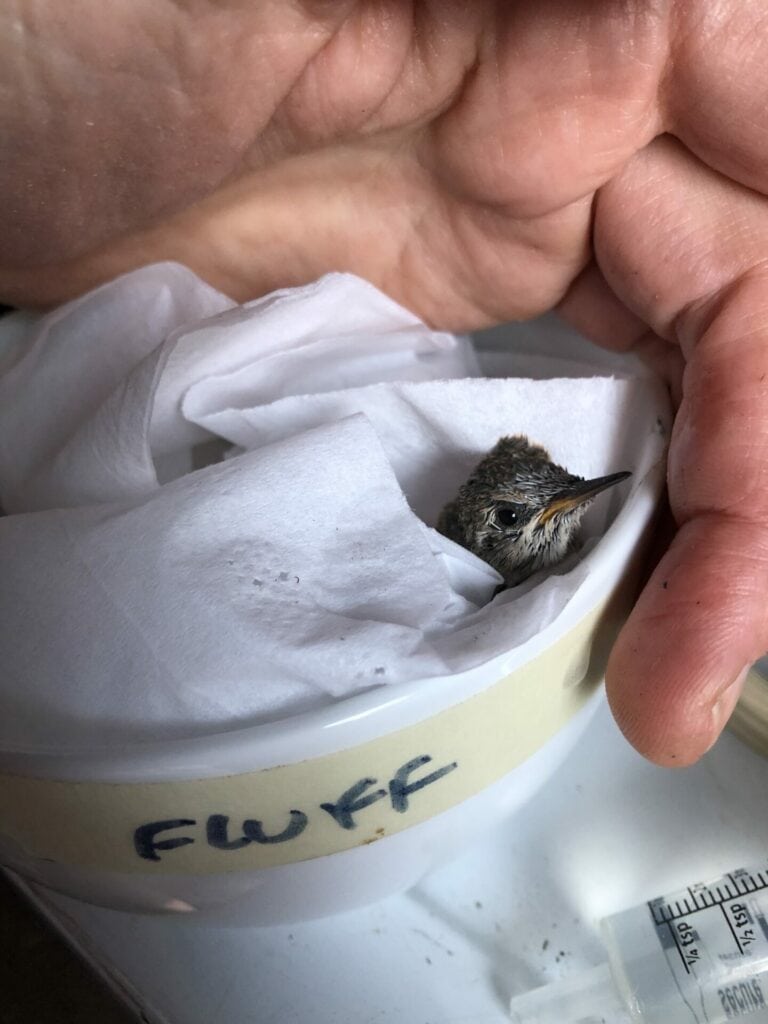
My friend instructed me to feed the little hummingbird, as I did not know how long it had been out of the nest and sitting in full sun. With an eyedropper and sugar water, using the same ratio as in the feeder, I carefully pushed drops of nectar into its gaping mouth, which it heartily swallowed. While in the bowl, it vocalized a few times and I realized that the “cheeps” I’d heard earlier that morning emanated from this little hummer. I later learned that young hummingbirds that fall out of a nest continue to be fed by their mother – even on the ground, though clearly that is not a safe or ideal situation. The vocalization is their way of telling their mom where they are.
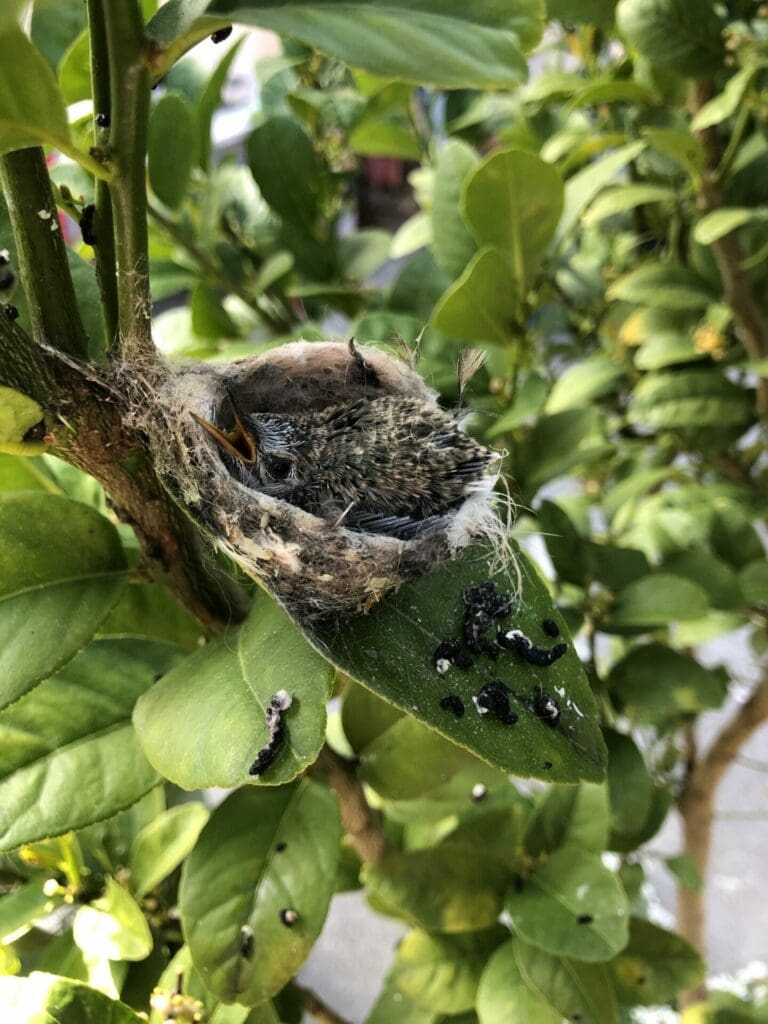
With the hummer seemingly uninjured (and continuing to try to climb out of the bowl), fed, and safe in the temporary tissue nest, it was time to determine next steps. My friend called her wildlife rehab contacts for more help, while I assessed the nest in which the second young bird was still snuggled. I quickly realized there was no way to safely place (a more accurate word would be ‘smoosh’) the other hummer back into the nest. The risk of falling was too high given the nest’s location five feet above concrete, plus the birds’ feather development indicated they still had at least a week before they would fledge.
Capitalizing upon my friend’s experience re-nesting raptors, we decided to make a new nest. With no time to weave a lichen and web nest, I put on my McGyver hat and began cutting down a sturdy plastic bottle, taping the sharp edges, drilling drain and wire holes, and lining the inside with moss as the final touch. Clearly not a work of art but better done than perfect, as the saying goes!
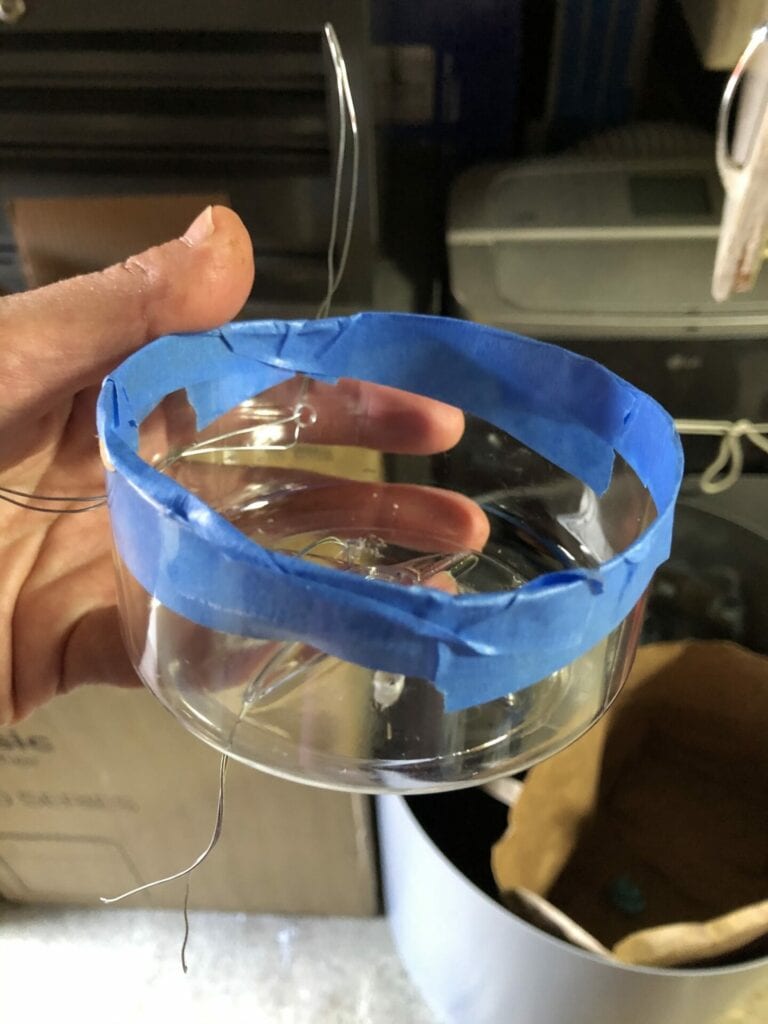
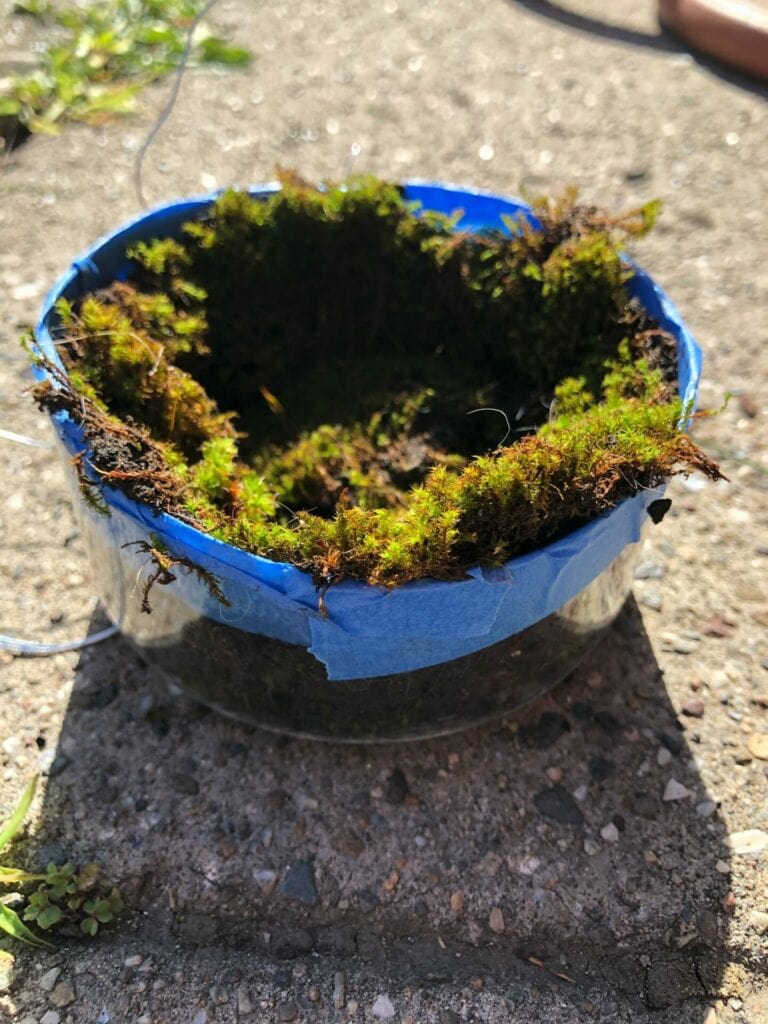
Retaining the same height and orientation as the original nest, I securely wired the new nest deeper inside the tree, taking care to locate it over a planted area. Then, with a nauseatingly deep breath, I cut the original nest (with the second nestling in it), placed it inside the new nest, and set the rescued sibling next to it. The total elapsed time of this emergency response was 20 minutes! Now I had to cross fingers and wait.
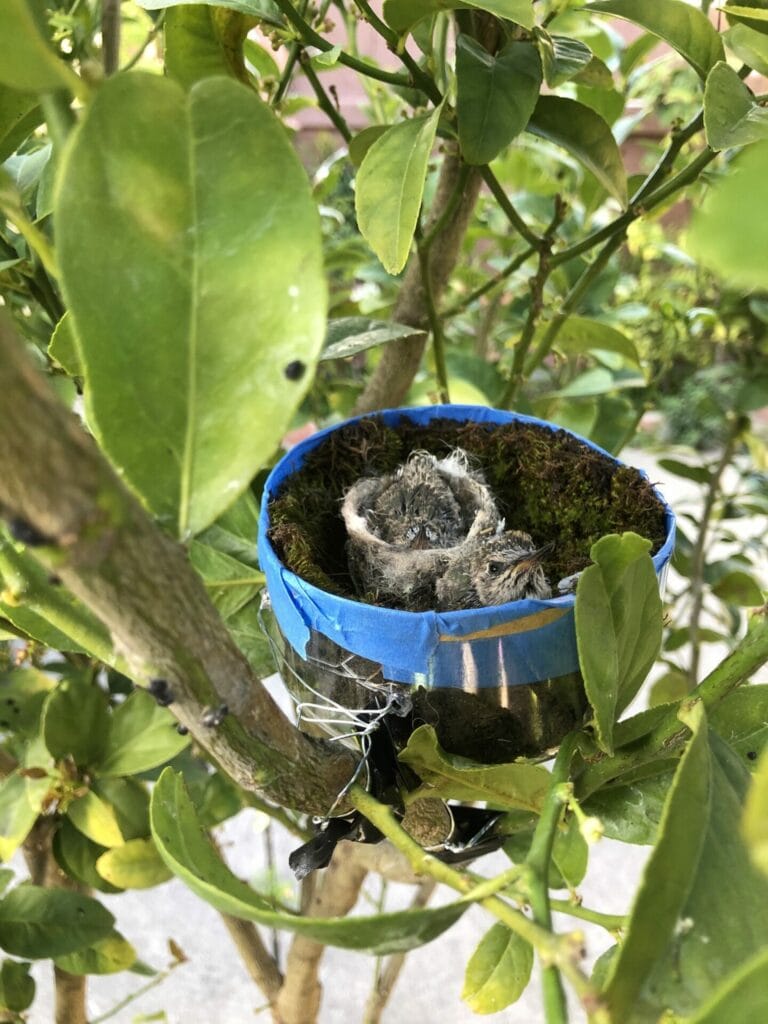
Within minutes of installing the new nest, the mom returned!

This is not the end of the story. The hummingbird that fell out regularly tested my nerves by perilously perching on the edge of the nest.
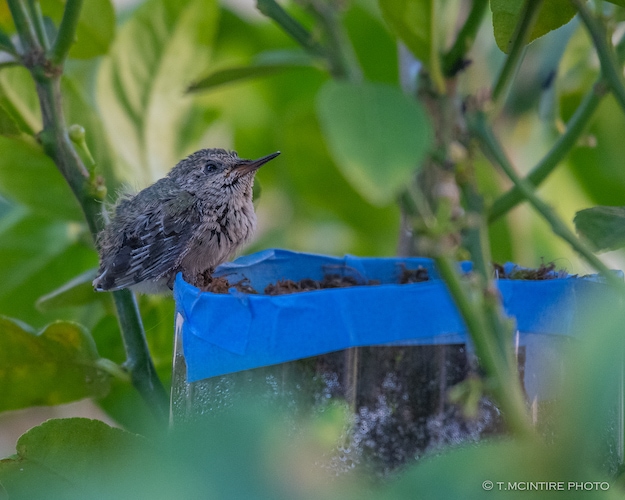
Working from home, I was able to keep a close eye on the little daredevil, which fell out TWO more times! Thankfully, I was more alert to the “feed me” cheeps,’ which alerted me that something had happened. Both times the nestling had fallen into the soft and squishy alyssum at the base of the tree. During this time, I was also in contact with a hummingbird rehabilitation specialist who provided professional expertise and direction. I literally had a team of experts on speed dial throughout this ordeal to whom I gave daily updates.
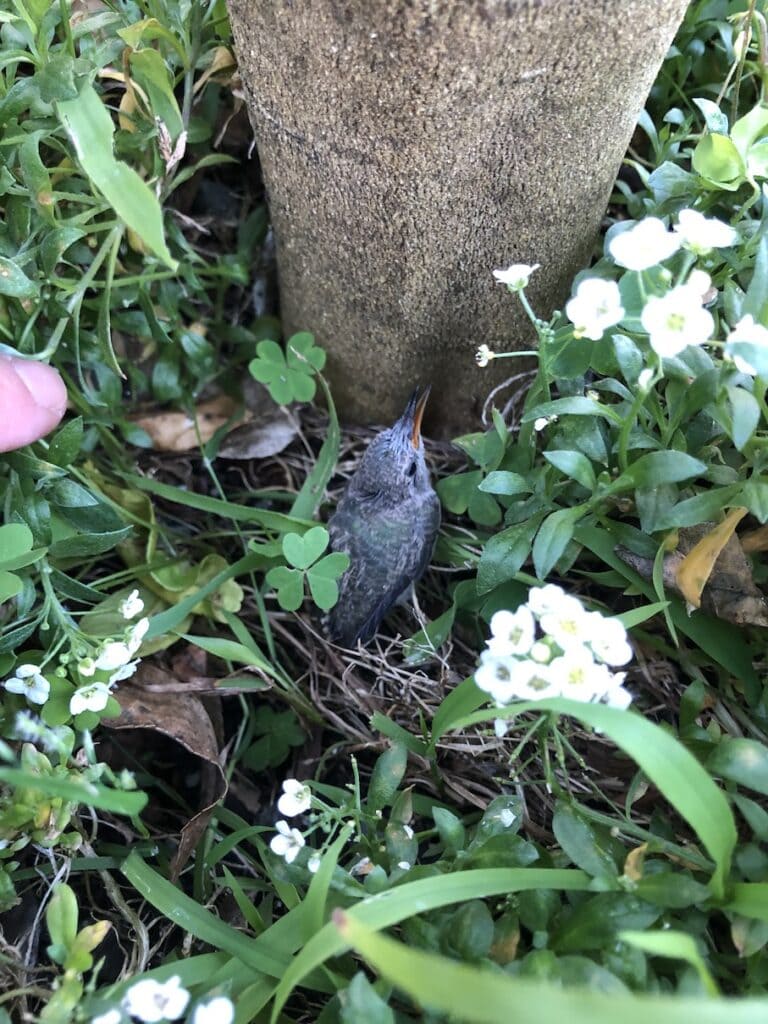

Both nestlings spent the days ahead of fledging in the nest, waiting eagerly for feedings from mom. Before landing to feed her youngsters, she would almost always zoom over the fence, stopping literally inches from my face, to remind me that she knew I was watching. A very protective and hyper-aware mother!


I didn’t think we’d ever make it. But approximately one week after re-nesting, one of the nestlings FINALLY fledged!
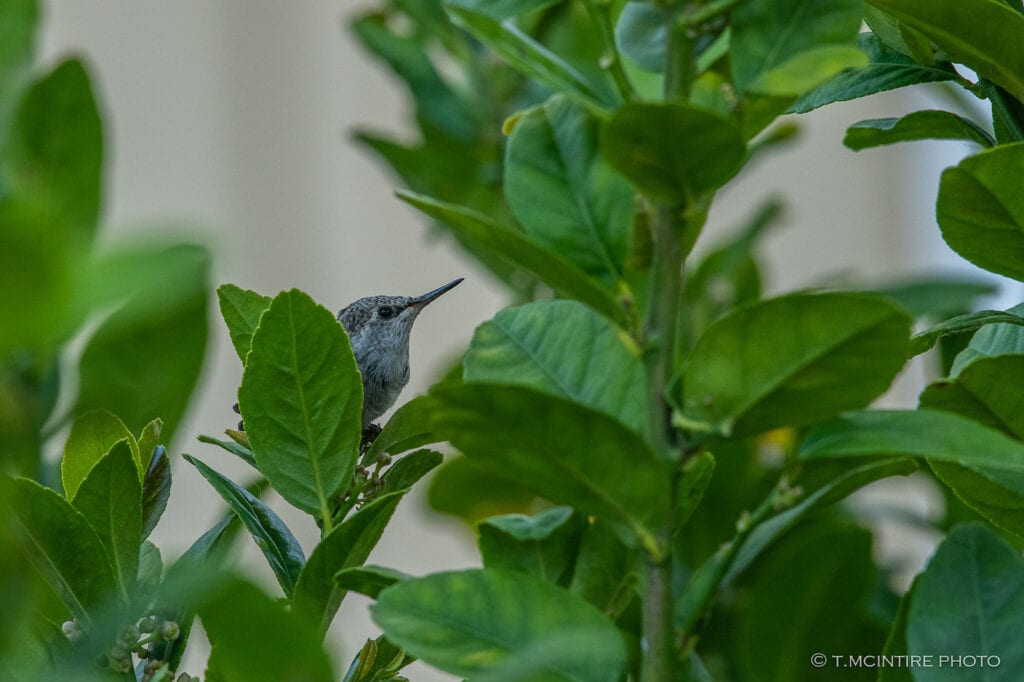
The remaining nestling stayed another day in the nest before it too took a brave leap. Though the first fledgling eventually flew over the neighbor’s rooftop, the second, which was still being fed by mom, practiced flying and hovering—the cutest thing ever—about the camellia bush branches in the yard.
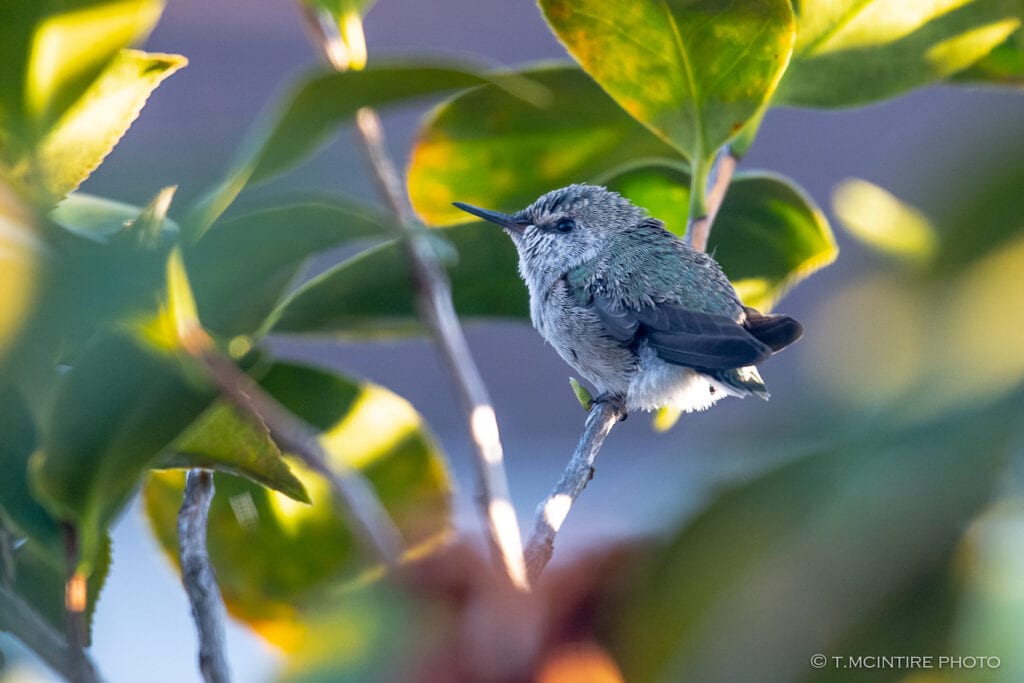

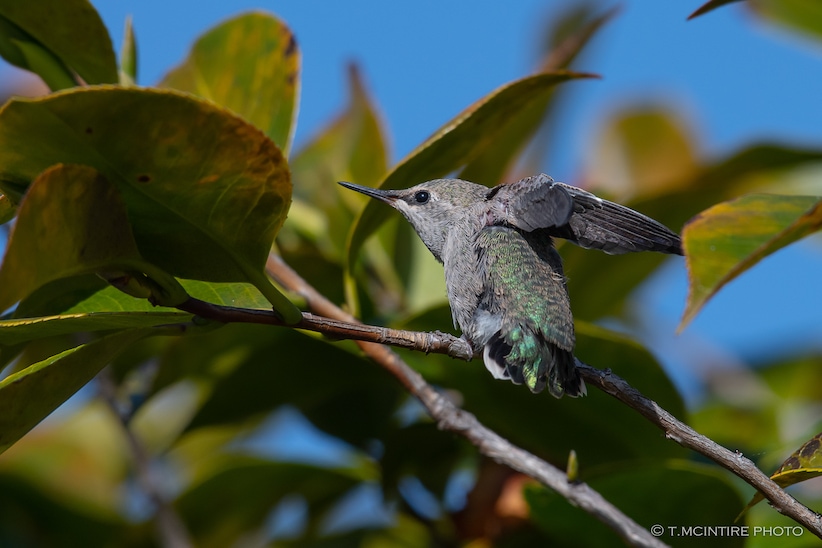
The next day, right before my eyes, it launched into a full hover before following its sibling’s route over the rooftop and out of sight. I thought I would be sad, but I could only smile, knowing all the effort and luck behind this memorable success story. Though I never saw them again, for weeks afterwards I swear I heard their little sweet “cheeps” in the distance.
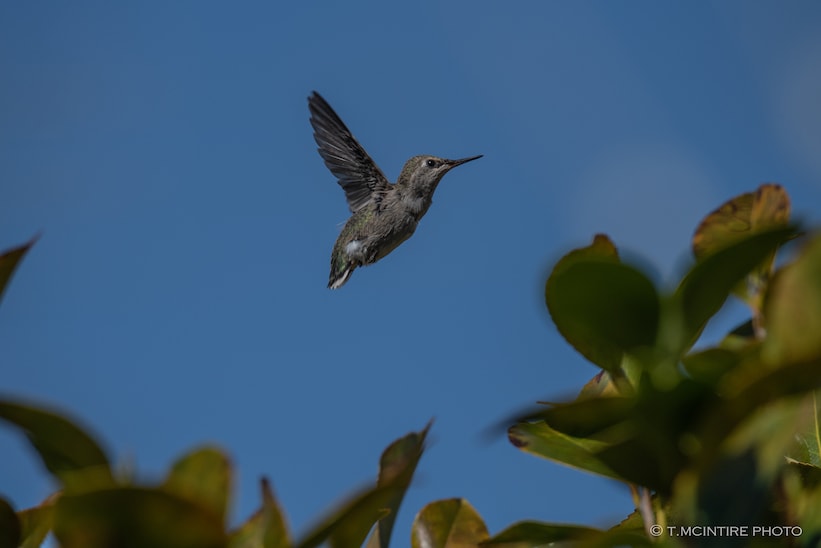
I wish to dedicate this story to my late neighbor Mrs. Francisca (Frances) Martin, who found the nest and fallen nestling. Also, a special thanks to Golden Gate Bird Alliance member and WildCare volunteer Anne Ardillo, to WildCare staff, and to hummingbird rehabilitation volunteer Brenda Goeden.
After this experience, we all needed a good rest!
Found an injured bird or other wildlife? In the Bay Area, call:
WildCare: 415-456-SAVE (7283)
Lindsay Wildlife Rehabilitation Hospital: 925-659-8156

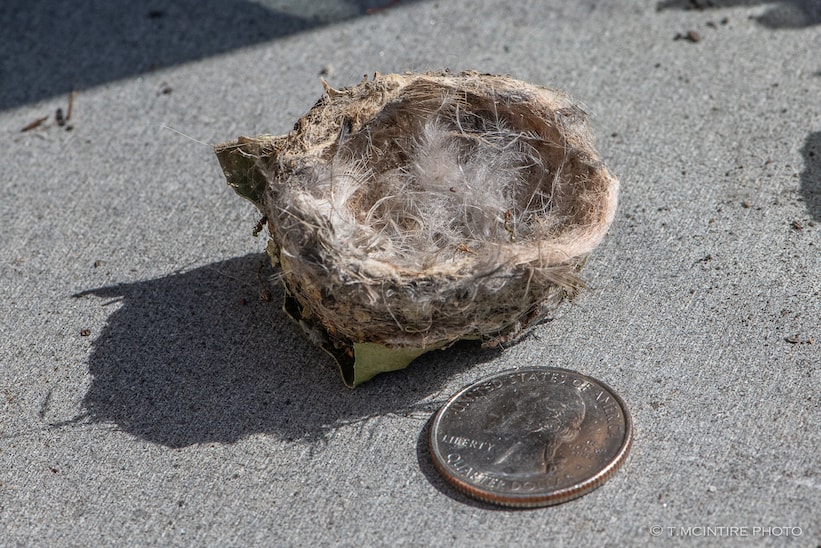
Tara McIntire is a local birder, Golden Gate Bird Alliance member, Master Birding graduate, Denise Wight ‘Birding By Ear’ disciple, and has led bird walks for both GGBA and the SF Bay Feminist Bird Club. She is both a landscape architect for Marin County Parks and an avid amateur wildlife photographer who actively promotes and practices ethical photography. All photographs are taken by and property of the author ©Tara McIntire. She invites you to follow her on Instagram @TMcIntirePhoto.
